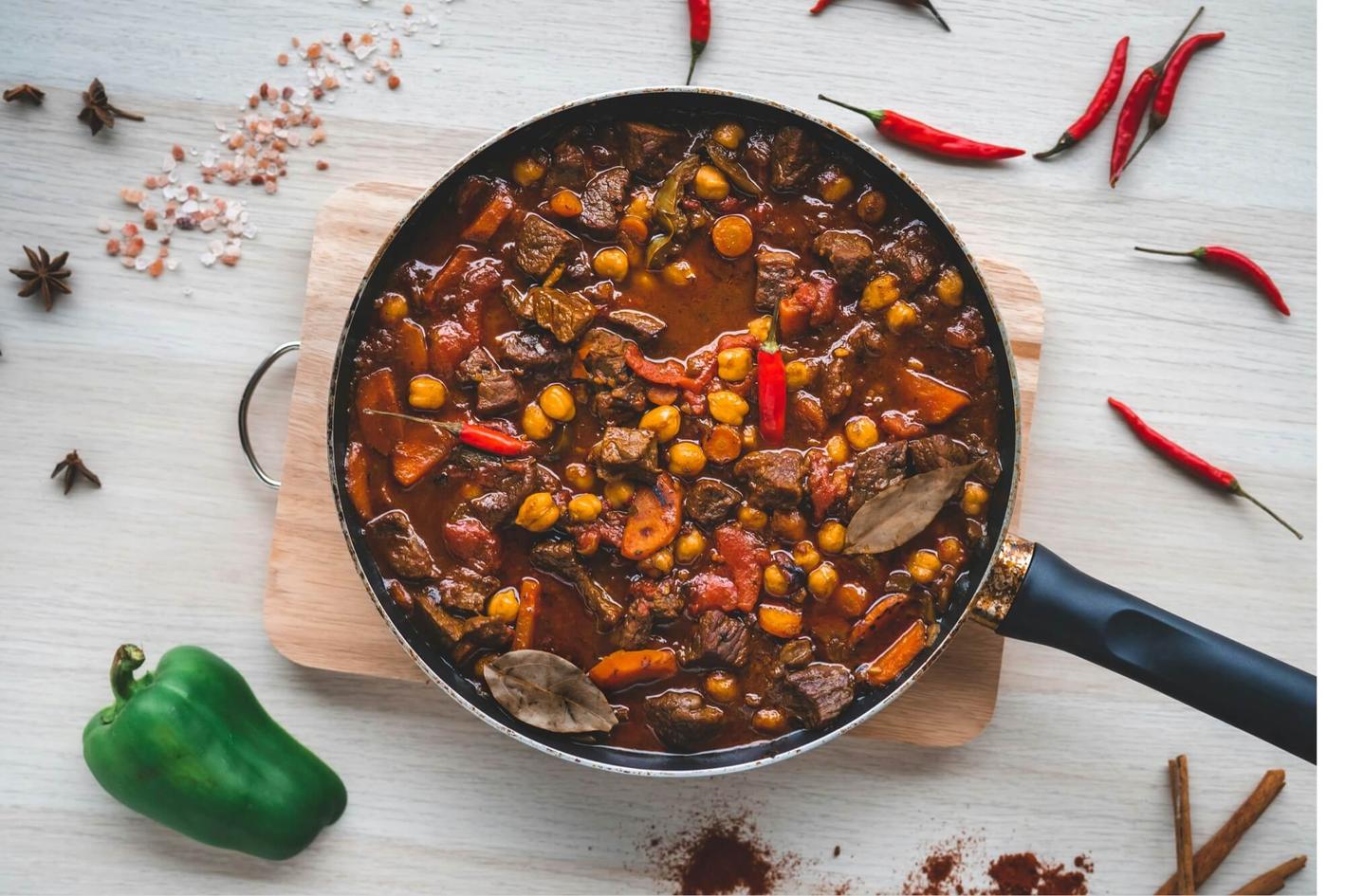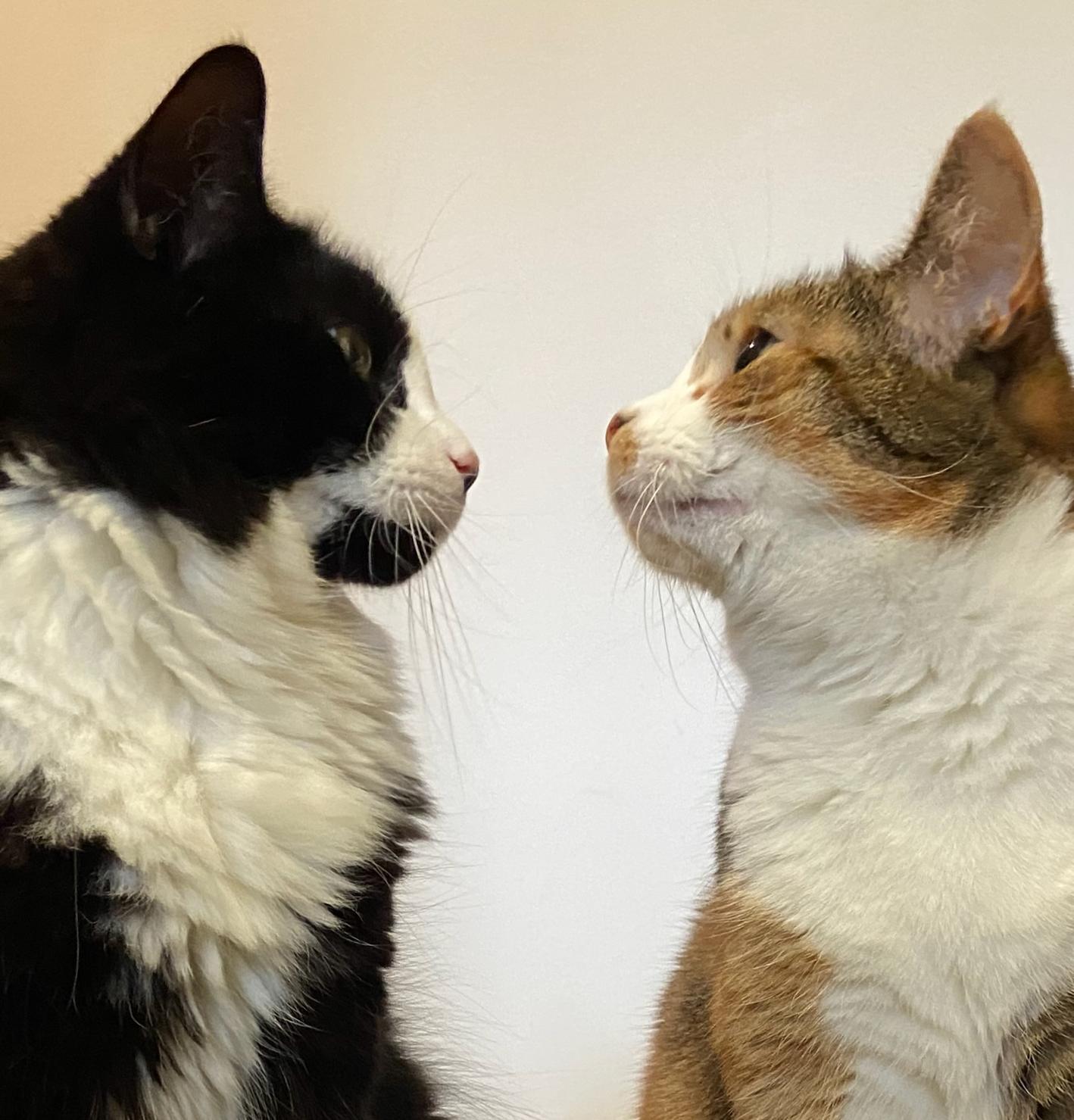Rory Sutherland has an idea for a coffee shop, called Flat White or F Off.
The Starbucks experience is great if you’ve got 45 minutes to spare, but at a railway station it’s completely wrong, because you want to get a coffee, pay, and get the hell out of there so you can catch your train.
So my idea is you only serve flat whites, you make them in advance, people pick one up, they tap with their card, they pay, they go off, and if you ask for anything other than the flat white, the answer is in the name.
This idea isn’t entirely insane. I have a harebrained scheme to start a food truck that sells chilli by the cup. You ask for a cup of meat or veggie chilli, to which you can add cheese or not add cheese. There are dispensers for guac and sour cream, and you get a little bag of tortilla chips on the side, and maybe a spoon. You tap to pay, and go on about your day.
In ‘n Out Burger, the famous California fast food drive-through chain, offers a hamburger, a cheeseburger, and their version of a Big Mac which they call a Double-Double. You can add fries and a shake, and that’s it.
To the uninitiated, In ‘n Out offers no modifications to its menu. You go there because you like what they offer and you want fast and polite service. But of course, over time, regulars have made certain requests that have formed a sort-of “secret menu”, so if a Double-Double doesn’t quite hit the spot, you can order up a 4x4, and get twice the meats and twice the cheeses.
These are all based on some variation of the 80/20 rule, otherwise known as the Pareto Principle, which states – in this case – that 80% of a company’s revenue comes from around 20% of the product line.
If we flip back to my chilli in a cup food van, if I only have two basic products – meat chilli or veggie chilli – you might assume I’d make equal batches of both. But I know from my research that roughly 80% of my customers will want the meat option, so I’ll make more of that. I can take it a step further, using the principle to decide whether or not to buy vegan cheese.
It wouldn’t be right to charge a vegan more for the fake cheese, but it costs me more to procure, so I can risk disappointing 20% of customers on this one modification, knowing that 80% will be unaffected.
The Pareto principle can tell us all sorts of things from the micro level of a small creative practise, to the macro level of an entire nation’s economy. But it all starts in a garden in Florence, and it has nothing to do with food.
Meet Vilfredo
Vilfredo Pareto fancies an omelette. Oh, OK, so I guess it has something to do with food. Anyway, he wants some peas to go in it.
“Dammit”, he thinks, “I don’t have any frozen peas because the freezer won’t be invented for another 50 years”. So, he swaps his indoor slippers for his gardening shoes, and heads out to check his pea pods.
What he sees is surprising. In his little garden, Vilfredo has five pea plants, each with around 20 pods, making a neat total of 100 pea pods. Trust an economist to cultivate a mathematically manageable garden.
Now, you and I might expect the pods to have roughly equal yields, around five peas per pod. But what Pareto found was that 20 pods were producing far more peas than the rest. In fact, 80 of the peas from his omelette came from a fifth of his plants.
As the story goes, this phenomenon intrigued him, so he started delving further into it, and he discovered this ratio everywhere, even in the Italian economy, which is a discovery that still holds true today.
80% of the stuff, it turns out, is owned by just 20% of the people. That was true of 19th century Italy and it’s true of most developed economies now. And it goes further.
20% of hazards in construction result in 80% of injuries, and 80% of crime is done by the top 20% of criminals. In software, the top 20% of bugs are responsible for 80% of crashes, and in business, 80% of complaints are generated by 20% of customers.
Another way to frame this discovery is with the phrase “the vital few and the trivial many”, and it’s that idea – not so much the number itself – that we need to focus on.
The chilli hypothesis

I’m having my cups specially printed with a logo and a QR code where people can give me feedback on the chilli. Just a few questions – how nice did it taste? Was it too spicy? Was the balance of meat and beans OK?
As the weeks go on, I can use that survey data to inform how I improve my chilli recipe. My aim isn’t to please everyone, but the top 80%. If 8 out of 10 people tell me my chilli’s too spicy, I know I need to dial it down. If I add cinnamon and only 20% of people tell me the flavour’s improved, I know not to bother next time.
But the principle can work in other ways, too. It takes me just as long to make a veggie chilli than it does to make a meat one… maybe even longer. So although I’m not losing money or wasting ingredients making too much, I’m spending 50% of my cooking time on something that only 20% of people buy.
That gives me an opportunity to optimise. Either I can say “no more veggie chilli”, or I can say “I only make veggie chilli from now on”, knowing that meat eaters are still likely to buy from me because it tastes good and no-one else is selling chilli in a cup because, honestly, who wants to sit on a train next to someone who’s eating chilli? Not to mention what it might to do the bathroom situation.
Another way I can use the principle is in noticing who I sell to. I’m probably not selling chilli to morning commuters, but if I start tracking my busiest times and what my customers look like – are they suited and booted or are they more touristy? – I can match my signage so it sends a clearer signal.
Instead of having a big sign that says “Hot chilli by the cup”, I could change it to “Fuel up before the big meeting” or “Grab your five-a-day before the next train”. By appealing to the 80% of people most likely to buy my product, I can optimise my marketing and sell more to that niche.
And and and, once I start noticing the same 20% of people coming back every week for their chilli fix, I can give them a loyalty card to encourage them to pop in again and again.
What you choose to optimise is, of course, up to you. You can use the principle to determine how you spend your free time, or who you spend it with.
The Pareto principle in teams
At the top of this episode I unearthed some minor childhood trauma in order to demonstrate how group dynamics often work. I’m sure you can remember being in some kind of group presentation scenario, where one of the group – probably you, let’s face it – did the lion’s share of the work while everybody else kinda just coasted.
If you’re not sure whether that was you, think back to some group projects and try and determine whether anyone ever asked you questions like “Is there anything we should be doing?” or “Are you not taking on too much?”
Over the years, I would repay many times over that slip-up from my geography class.
But I mention all this not just to air out past grievances, but to demonstrate how the Pareto principle shows up in different ways, and if you spot it, it can help you make decisions about how you’re showing up.
Laws of nature, business, and creativity

If we stick with the social aspect for a second, the Pareto principle holds a mirror up to the mistaken notion that the world is in some way balanced.
I have two cats, both from the same litter. Roscoe is generally big-boned, while his sister Bailey is, well, plumper. She was the runt of the litter, so she is, as my vet described her, “food motivated”, whereas Roscoe is built physically bigger and so needs more food, but often doesn’t get it because his sister is quicker, and frankly, wants it more.
Many of us who are in some way neuro-spicy can struggle with fairness, because we expect the world to be just, and we get upset when it isn’t… especially for others.
A 2014 study by the University of Plymouth found that the richest 20% own over half of the world’s money, and that over 90% of the world’s wealth is distributed among 20% of the countries.
It’s in this very medium, too. Did you know only around 1% of podcasts actually make money? (That’s a somewhat disputed number.)
The tricky thing is, we often assume that the effort we put into a thing should result in an equal amount of output. But as I hope I’ve shown so far, that isn’t the case. So, how can we use this to our advantage?
The Pareto principle in the office
Let’s say around 80% of your output at work is generated by 20% of your effort. For a programmer, that might mean the amount of time they spend actually writing code, vs the time they spend in meetings, writing documentation, Googling error messages, liaising with clients, reviewing other people’s code and so on.
For someone who writes music, 80% of their time is probably not spent writing music – it’s finding clients, negotiating rights or tracking down royalties, invoicing, networking, and so on.
And as a quick side note, the 80/20 rule can help us with negotiation, too. If you’ve got a list of things you want to get out of a negotiation, focusing on the 20% that matter most will likely give you better results than if you tried to spread your focus and win back every line item.
Sticking with music, if you’re a library composer, ie you make the kind of music I use in this podcast, you might find that 80% of your income is generated from a certain genre of track – it’s probably this kind of corporate wank, for which U2 has a hell of a lot to answer for.
Sure, that work might make 80% of our musician’s profits, but I doubt it contributes to 80% of their creative fulfilment. So that’s another way we can use this principle: to help us focus on the work we’re really great at – the stuff only we can do – and push the rest off on someone else.
Imagine what would happen – how much you could achieve – if 80% of your time was spent doing the stuff you’re really great at. Now, for most of us, this isn’t attainable right now, but it doesn’t mean it isn’t something we should aim for.
Let Brandon cook
Brandon Sanderson is a fantasy author. That’s what he was put on this earth to do. He wasn’t made to negotiate with publishers or to proof-read or to liaise with beta readers. He wasn’t made to go back-and-forth with cover designers or to audition audiobook narrators.
He’s designed his work life so he can spend as much time as possible Doing the Thing – in his case, writing fiction.
Everything in our company is built around “let Brandon cook and take away from Brandon anything that he doesn’t have to think about or doesn’t strictly need to”…
My water bottle; I don’t have to worry about refilling it and having ice in the morning. I’ve set up a system where somebody does that and I just pick it up and go.
This is maybe something of an extreme example, but it’s a place to aim for, right? When you identify the thing you’re uniquely gifted at and can make money from – what the Japanese call your ikigai – the next step is to figure out how you can outsource everything in your life that isn’t that thing… or at least as much of it as is humanly possible.
This brings us back to a past beef around self-help books of course, that assume there’s always someone else to take care of the boring bits. But like I said, this isn’t necessarily something we can go out and achieve right now, but a north star worth walking towards.
The Pareto principle at home
The Pareto principle can even stretch into relationships. Now we’re in danger of getting a little over-analytical here, but it’s worth spending a few minutes thinking about the 20% of relationships that mean the most to you.
I’m obviously not suggesting you turn up to your next pickleball game with a clipboard and a stopwatch, but you can start to think about whether the time you’re spending is with the people you value the most.
And there’s another way Mr Pareto has got your back. If you’re ever sat on the couch with a full Sunday stretching ahead of you, a whole list of jobs you’re supposed to do around the house and no idea where to begin, try this:
Look through your list of stuff and focus on the 20% of jobs that’ll have the biggest impact: on you, your family, your pets, or your home. What makes this list will be different for each of us, so a good way to think about it is “What are the 20% of jobs that’ll give me the most joy when they’re done?”
For me that means cleaning up my kitchen after my last batch of chilli. The last thing I need is to be confronted with several bowls full of guilt every time I go in there for a coffee.
If you’re procrastinating on something, think about the impact it’ll have once that job’s done. OK so you’ve got a newsletter to write, but suddenly cleaning the fridge seems more important. But how good will you feel knowing you’ve done your bit of marketing for the week, and will it feel better than opening up to a sparkling salad drawer?

Now, one important note here – and, listen, you’re smart, you’ll have figured this out already, but let’s be explicit about it – those 80/20 numbers are not set in stone. In fact, Pareto himself offered this pearl of wisdom as a caution against taking these things too seriously:
Men follow their sentiments and their self interest, but it pleases them to imagine that they follow reason. And so they look for and always find some theory which a posteriori makes their actions appear to be logical. If that theory to be demolished scientifically, the only result would be that another theory would be submitted for the first one and for the same purpose.
It’s more of a generalised law of nature – which is chaotic and random – than a mathematical certainty. Try not to take it too seriously, but use is as a guiding principle.
Find the things you do in work and life that result in the greatest improvement to your situation. Then, find ways to make it easier for you to do more of them. If the world needs what you’ve got, you won’t win any prizes for doing a bunch of admin.
Go forth, find your 20%, and build your life around it.